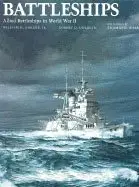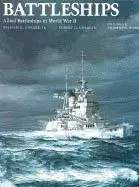Robert O. Dulin, William H. Garzke, "British, Soviet, French and Dutch Battleships of World War II"
Jane's Information Group | 1981 | ISBN: 071060078X | 415 pages | PDF | 40,7 MB
Jane's Information Group | 1981 | ISBN: 071060078X | 415 pages | PDF | 40,7 MB
Preface
Battleships and battlecruisers are warships of a bygone age, but for the first several decades of the twentieth century they were regarded as the ultimate
weapon of sea power by the major navies of the world. With their large
guns, heavy protection, and large displacement, they were accorded the
compliment of being termed " capital ships." Until World War II, it was
axiomatic that capital ships were considered the basic measure of relative naval
power. Now they are merely the vanished symbols of a past age of sea power.
During most of the first half of the twentieth century, until air power made them
obsolete, the number, characteristics, and availability of capital ships fundamentally
influenced foreign policy and naval strategy. From the onset of the Dreadnought era,
government officials, naval officers, civilian engineers and technicians, and laymen
debated the complex problems of determining how many capital ships were necessary,
their desired characteristics, and the best means of deploying and operating battle
fleets, which were based on the battleship.
Two epochal developments during World War I significantly influenced the course
of capital ship design: .
• The development of the submarine as an effective combatant type forced the
designers of capital ships to provide reasonable protection against torpedo at·
tack .
• Similarly, the development of aircraft prompted interest in antiaircraft gunnery
and in heavier deck armor to resist bombs.
In the years following World War I, the supremacy of the battleship was challenged
by the advocates of air power. They insisted, accurately but prematurely, that the
primacy of the capital ship was doomed by air power. The success of U.S. Army
aviators under the leadership of General William "Billy" Mitchell in sinking a destroyer,
light cruiser, and three obsolete battleships (most notably the ex-German
Ostfriesland) in rather sensational (and one-sided) ordnance trials in 1921 and 1923
inflamed the controversy. Battleships were not defenseless and certainly not without
any protection, but they did succumb to a new and more dangerous foe. For the next
two decades, there was a proliferation of periodicals and books that forecast the demise
of battleships under air attack, either at sea or in port. Inevitably, these developments
influenced the design of new capital ships…….
Not all books on AvaxHome appear on the homepage.
In order not to miss many of them follow ebooks section (see top of each page on AH)
and visit my blog too :)
In order not to miss many of them follow ebooks section (see top of each page on AH)
and visit my blog too :)
NO MIRRORS according to the rules



